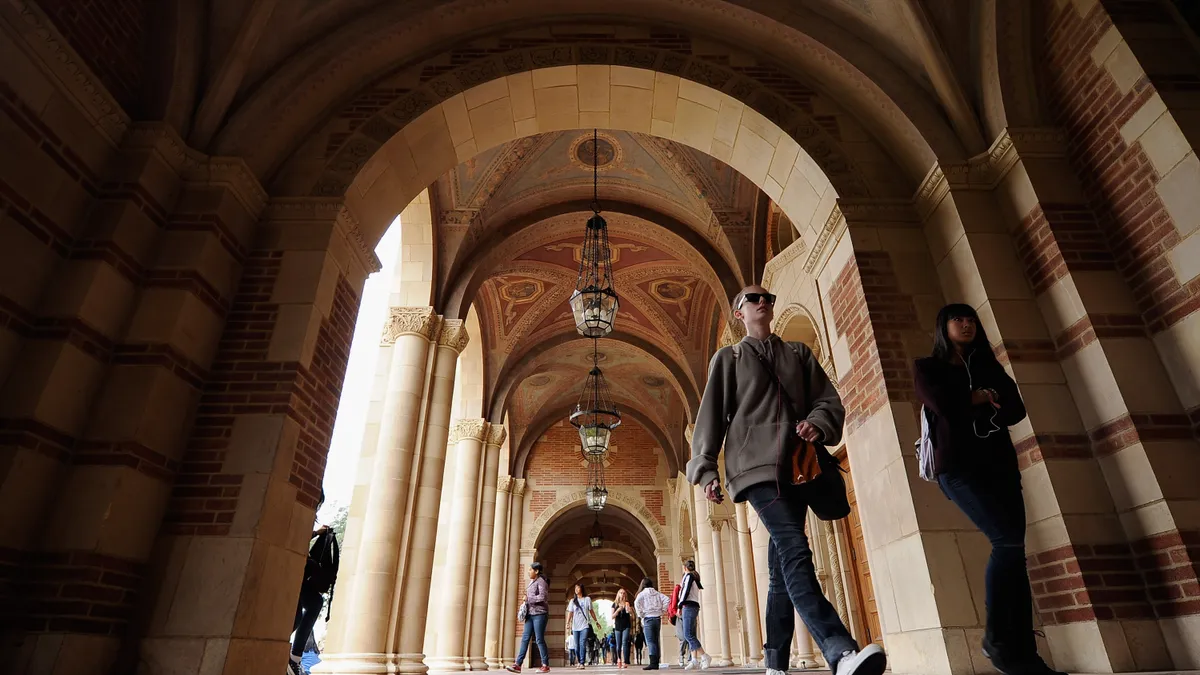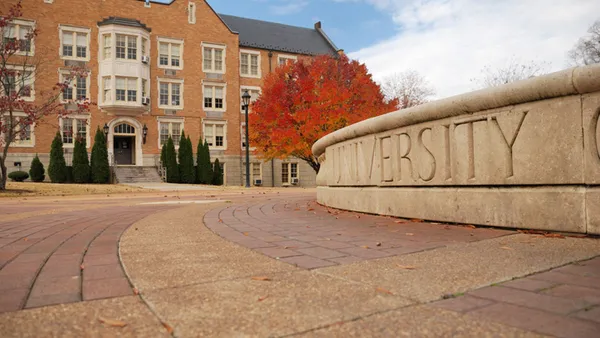Dive Brief:
- Borrowers are taking on more debt to complete their graduate degrees, potentially eroding their return on investment, according to a recent analysis from the Urban Institute, a left-leaning think tank.
- The median debt among borrowers who completed master’s degrees nearly doubled in under two decades after adjusting for inflation, rising to $60,945 in 2016 from $36,157 in 2000.
- The paper also found that the typical earnings for workers with graduate degrees have held steady after increasing in the late 1990s and early 2000s. Earnings have remained stable despite a rise in the share of workers who have graduate degrees.
Dive Insight:
The analysis offers a glimpse at trends in the graduate degree market amid seismic changes in federal student loan policy. President Joe Biden is fighting in court to carry out broad federal student loan forgiveness, and his administration has separately cleared billions in debt for students who say they were misled by their colleges. The administration has also proposed lowering how much borrowers must pay each month on income-driven repayment plans.
Payments and interest accrual on federal student loans have been paused since March 2020 because of the pandemic, and the Biden administration announced in November that it is extending the freeze until June 30 or the courts allow the loan cancellation plan to proceed — whichever comes first.
These policy shifts make it unclear how much recent borrowers with graduate degrees will end up paying on their loans. But the report sheds light on how recent federal loan policies may have contributed to current student debt trends and points out potentially troubling patterns that lawmakers should consider.
“You have these increasing amounts of debt,” said Kristin Blagg, a senior research associate at the Urban Institute and the paper’s author. “It’s really hard for us to tell what that means for individual borrowers because policy around student loans has changed so much.”
Undergraduate borrowers didn’t see the same level of increases in their debt loads as graduate students. The median debt among borrowers with bachelor’s degrees rose at a much slower clip, from $23,953 in 2000 to $31,966 in 2016, when adjusted for inflation.
These differences may be chalked up to differing federal student loan policies for undergraduate and graduate students. Borrowers pursuing graduate education have been able to borrow up to the full cost of their attendance since 2006, while undergraduate students are subject to annual borrowing limits.
Rising shares of graduates with master’s degrees have taken out debt for their education, the paper found. Forty-seven percent of people who completed a master’s degree in 2000 took out loans for their education, compared to 60% of those who finished a master’s degree in 2016.
Borrowing rates were more steady for graduate students who completed professional or doctoral degrees. About 75% of graduates who completed a professional degree in 2016 took out loans, compared to 81% in 2000. And 51% of graduates who finished a doctoral degree in 2016 took out loans, up from 44% of those who got their diploma in 2000.
Ten years after earning their bachelor’s degree, master’s degree graduates earned a median salary of $72,512 in 2018, when adjusted for inflation. In contrast, those with a professional degree earned a median of $102,495 that year, while those with a doctoral degree earned a median of $76,326.















